- Home
- S. E. Hinton
Some of Tim's Stories Page 9
Some of Tim's Stories Read online
Page 9
Were you uneasy at all about being directed by Coppola? That put your relationship on a whole different footing; after all, he’d directed Pacino, Brando, the all-time greats.
Francis was always really sweet to me. I’ve kept my SAG [Screen Actors Guild] card all these years in case he ever calls again. I’m ready.
Do you believe that working so closely with Coppola in the films also made you a better novelist?
It certainly gave me a different take on my writing. I started thinking in terms of scenes.
Earlier you spoke of the new 2006 DVD release of The Outsiders, subtitled The Complete Novel. Is the movie even better now?
I think so, because we shot the whole book. Francis was very adamant about that, but there was a lot of studio pressure before it was first released, and he cut the heck out of it. I was shocked the first time I saw it in the theater. So much of it was missing. I didn’t say anything; I’m not a movie director or a movie editor. But it was chopped up into one action, one action, one action. Francis—it turns out—started getting the same letters I was getting, wondering why favorite parts of the book had been left out. Finally, he replaced twenty minutes of deleted footage. Francis is the only director I’ve ever heard of who went back and re-cut a movie because fans of the book asked him to.
He also added a lot of period music to the soundtrack.
I think Francis was right to add the music. The original music was a little too grandiose for the story. I’m not very musically oriented, but I like Stevie Wonder’s “Stay Gold” very much. And the music for Tex fits the rockabilly nature of that movie. I loved the soundtrack for Rumble Fish. Very startling at the time, and I’ve noticed that it really has influenced other soundtracks since then.
Your friend Emilio Estevez wrote the screenplay for That Was Then, This Is Now and starred in the film. Why do you think it hasn’t received the same level of recognition as The Outsiders, Tex, and Rumble Fish?
People wondered why I was letting a twenty-year-old kid write the screenplay, but I was the same age when I wrote the book. Emilio knew a lot more about screenplays than I did—so why not? I told him, though, that the studio would make him change the ending, which would ruin the whole impact of the story. As much as Emilio had been around movies, he still didn’t realize how powerless the screenwriter was. There are a lot of good things about that movie, but it turned out to be wishy-washy.
Do you think there will ever be a film version of Taming of the Star Runner?
There might be a film version. One time I did a screenplay for it and got paid, but it’s hard, because the book’s so introspective. As a matter of fact, when I was writing it, I was thinking no one’s going to be able to make a movie out of this—two of the major characters are a kid and a cat. But I’m not concerned; I didn’t write it to be a movie.
Ultimately, how well do you think the films have complemented your novels?
I’m extremely happy with Tex and Rumble Fish, because they captured the spirit of the books so well. I’m happy with The Outsiders because not only was it a wonderful, wonderful experience for me, it also got recognition for some brilliantly talented boys. And it satisfies my fans. Kids wanted the movie.
You continue to admire good films. Earlier you mentioned Brokeback Mountain. Why do you think the movie appealed to you so much?
Brokeback Mountain is one of the first movies I’ve seen in ages that I’ve wanted to re-watch and figure out. The director, Ang Lee, made that movie work with his transitions from scene to scene. It’s like a piece of literature that resonates in your subconscious. Every time I see it, I see something new. I also re-read books constantly. I re-read all of Jane Austen at least once a year.
Do you see any connection between Brokeback Mountain and your own stories?
Not really, except that both are very character-oriented; and I always start with characters. I wanted to see Brokeback Mountain because I’d read the short story by Annie Proulx, which blew me away. It’s so straightforward and sparse, it grabs your heart. Proulx’s metaphors—and some of her dialogue—are incredible. The people who made the movie had the sense to stick with her story.
Have you ever considered developing a property directly for the screen?
Yes, I’ve written two screenplays, one a paranormal western. If I don’t get it made into a movie in a few years, I’m going to novelize it. That’s how much I love it. And then I’ve got another one I developed with my friend Tim Zinneman. I hope to see that get to the screen, too. I’ve always said writing a novel is like doing an oil painting. You can make it minimalist; you can make it abstract; you can make it photo-realistic. But writing a screenplay is like drawing a coloring book, because other people—set directors, directors, actors—are going to come in and add their shades.
You’re still showing up in movies from time to time. What can you tell us about your most recent cameo appearance?
Tim Hunter gave me a call last year—he knew I’d kill to be on the set of a western—and said he was shooting a low-budget western, The Far Side of Jericho, in New Mexico. He invited me to visit for week and arranged for me to be an extra. I went to wardrobe and got rigged up as this old ranch woman. I’m still not sure if the movie’s going to get released, or if it’s going to go straight to video.
Your son, Nick, has become involved in the movie business. What are your hopes for him as he focuses on a medium that has been so gratifying for you?
He hopes to go into film-sound engineering after he graduates. He recently did an internship at George Lucas’s Skywalker Ranch and studied film-sound design. All I’ve ever hoped for Nick is that he’ll get into a field, like I did, that he loves. It’ll be like getting paid to have fun.
Little Kids And Vampires
Aleasha: 3/29/91 to 7/31/06
JULY 25, 2006—TULSA, OKLAHOMA
Susie celebrated her birthday on July 22, and before we get started with our literary talk, she shows me the bronze frogs her husband, David, has given her to celebrate the occasion. Frogs, she tells me, took control of her house several years ago, and now she collects them. The frogs she points out to me in the den are no ordinary frogs; they are art—carefully crafted, colorful, sleek. She has even more frogs in her office, where they inconspicuously line the bookcases and her desk. That’s the way she wants it. The frogs aren’t imposed on her inner decor; they’re carefully placed to be a part of it—and of her ongoing narrative. One frog guards an artificial crow, while another keeps an eye on the Loch Ness monster. Sometimes, Susie says, visitors try to realign the frogs more conventionally, and then she has to put them back into story position.
How was the break you took between your young adult novels and your children’s books different from the writer’s block you experienced after The Outsiders?
I had a baby, and he was a surprise. He was much wanted, and he was absolutely adored by both his parents. I couldn’t take my eyes off him long enough to write anything, and I sure didn’t want to write about teenagers.
Why did you decide to return to writing with a children’s book?
My editor came to visit me, and we spent all afternoon with the age-old idea sparker, a bottle of scotch. We still couldn’t come up with any ideas, so we started sharing kid stories, because his daughter is almost exactly the same age as Nick. I told about this trick that David had played on Nick in kindergarten. Nick came home the first day and said, “Dad, there’s a kid in my class that has black hair like you, wears glasses like you, and his name is David like you. Now is that you?” My sensitive, politically correct husband said, “Sure, Nick, that’s me. I get little every day and go to school with you.” Nick was very puzzled. He thought it wasn’t true, but he didn’t know for sure. And I have to admit I aided and abetted David. When Nick would come home and say, “Oh, it was so gross today; Kelly threw up,” I’d get him ensconced in front of the TV, run and call Da
vid, and tell him Kelly had thrown up in class. When David would get home, he’d say, “Nick, weren’t you grossed out when Kelly threw up? Ugh!”
What was your editor’s response?
I happened to glance over at him, and he seemed torn between falling off the couch laughing and calling the Department of Human Services. He told me to write the story up, and we’d make it into a children’s book. I’d read a lot of children’s books to Nick by that time, and I knew what I liked, which was not many words on a page.
What were some of yours and Nick’s favorite children’s books?
All the Dr. Seuss books. Some of the books I liked as a kid weren’t necessarily the ones he liked. I love the Berenstain Bears. Of course, the old standby Goodnight Moon is everybody’s favorite. The illustrations are just so fantastic.
How did you convert your family story into an actual storybook?
I gave the story a plausible twist, because Nick was pretty clever at that age, too. He’d come home from school and have tests for his dad: “Okay, who lost a tooth today on the playground—was it Colton, was it Sam, was it Rob?” It didn’t take long for David to figure out it was always the first name. Nick would always give him three choosements. “Choosements”—I thought that was a good word, so I used “choosements.” Another time Nick said, “You know, I have many tricks on my sleeve.” So I used that for the ending line.
This was a picture book.
Yes, Random House sent me several books by illustrators they liked, and I got to pick my illustrator, who did very clever illustrations and even managed to put the dog in, even though I had never mentioned the dog. Also, there’s a picture of the family sitting on the couch reading, which was very typical of us. Nick said, “You know I’m not redheaded,” and David said, “But at least I’m tall,” and I said, “And at least I’m skinny.”
How involved was the family with the actual writing of the book when you were working on it?
They just listened to it. David got a huge kick out of it, because it was his deal, and it was a true story. We kept it up for almost a year. Nick kind of got a kick out of it because he was going to be in a book. We all three enjoyed it.
Were any of Nick’s friends in the book?
Yes. Colton’s mom, Sam’s mom, and Rob’s mom bought the book because their kids’ names were in it.
Since you were writing for little kids, did you have to work on softening your characteristic grittiness?
Not my characteristic grittiness. There’s not a grit in it. But Nick was mature for his age and had a very sophisticated sense of humor. At times, I may have overestimated other kids’ grasp of the situation. I did have to work on that.
Did you have to make any other adjustments as you wrote for a younger audience?
I just had to remember to keep the word count short. I thought I had, but the editor sent it back, saying I needed to cut it even more. He was right. It wasn’t a book for children to read; it was a book to read to them. I remember when I was reading books to Nick that I preferred fascinating pictures with a little bit of story.
Was writing text for a picture book ultimately as satisfying for you as writing young adult novels? In other words, did you feel that the picture book was a substantive enough vehicle for your talent?
No, not really. But it was right for that time in my life, because I wasn’t ready to get totally involved in writing another novel. I wanted to be creative, but I just didn’t have the energy or even the interest to delve into a novel, which takes a whole lot of focus and, for me, a lot of emotional energy.
How closely did you work with the illustrator, Alan Daniel?
We never met, never talked, never e-mailed. But Alan was so clever, including a lot of puns on big and little, tall and short. It almost seemed like he was there with us. In the book, when Nick says he has a question for his mom, that he’s just waiting until she finishes her coffee, because she is always nicer—well, that’s the way we were. In the illustration, the mom’s sitting with her eyes half open, her coffee spilling, just looking at her kid. Somehow Alan knew.
Did you write the book with the idea that the pictures would finish what you were saying?
I hoped the pictures would entertain. And they did. One reason I picked Alan was because I thought his illustrations had a lot of energy to them, even when the characters were just sitting on the couch and reading.
How did the feedback you got from your younger readers compare to the feedback you got earlier in your career?
I have to admit I had no fan letters from five-year-olds. I did have some from adults. My emotional books are the ones that inspire the most fan mail.
You followed Big David, Little David with The Puppy Sister, a chapter book for children. Wasn’t this story also based on another real family experience?
When I got through with Big David, Little David and still didn’t have any idea what my next novel might be, I thought I’d look around the house to see what else I could write about. The Australian shepherd puppy we had brought home to be a sibling for Nick had made herself into a member of the family. I’ve always been an animal person—as a child I’d make pets out of bugs. But Nick wasn’t an animal person, and there was so much sibling rivalry. He’d be going, “Mom, I’m playing Nintendo, and Aleasha’s annoying me.” Then Aleasha would come running in, like she was saying, “He’s supposed to be playing with me!” They finally bonded, and one day, when we came home from a walk, Nick said, “I think Aleasha’s wondering when she’s going to turn into a real kid like me.” And I thought, There is my hook!
Granny, who was Miss Kitty in The Puppy Sister. —S.E.H.
The fact that Aleasha wants to be a human kid?
Yes, and have more fun like Nick. So through sheer determination, she starts changing herself. I hung the story on a year around the holidays. I figured if Aleasha spent her first year in dog years, she’d be seven by the end of the book. When she finally learns how to talk, Nick gradually breaks it to his parents, and, of course, they’re shocked. I think the quote from the book is: “Mom sat down very suddenly on the floor and took a nap.” By Halloween, Aleasha’s changed enough that she and Nick go out trick-or-treating as werewolves. And then at Christmas, she wakes up, can see colors for the first time, and calls them “smells for the eyes.”
That’s a great line.
I really like that line, too, even though I did come up with it. By spring Aleasha’s become a human girl, goes to a baseball game, then catches a foul ball in her mouth. By the way, she and Nick were still squabbling.
You mentioned in one of our earlier visits that The Puppy Sister holds the distinction of being the only story, thus far, that you’ve written from the female perspective. What was it like for you as a storyteller, switching gender and species?
It was fun. While Aleasha’s watching TV, she sees some ballet dancers, stands up on her hind legs, twirls, and turns like a little girl. She has strong toes for ballet—and loves going to lessons—but she can also kick a soccer ball. I’d noticed that Nick and a lot of his friends were into fantasy, imaginative worlds. Their recipes for dragon stew would include lizard eyes and goat blood. But some kids, jocks, were more into their sports, and their recipes for dragon stew were basically potatoes and onions. So Aleasha was the athletic type; Nick was into swordplay.
How did you keep Aleasha from becoming a caricature?
By never thinking of her as a caricature. I used Aleasha’s personality as much as I could understand it. She could feel guilty, but then in an instant she chews all of Nick’s toys, because she’s so mad he’s gone off to have fun without her. Which actually did happen in real life with some of Nick’s plastic figures. When Nick comes back, Aleasha cowers, saying, “Oh I did it, and I’m so sorry,” which, I think, is a dog trait. In the end of the book, the pediatrician, who’s been let in on the story, describes her
as a perfectly normal little girl, very affectionate and enthusiastic. Aleasha jumps up, grabs Mom around the neck, and says, “I will always be enthusiastic and affectionate—whatever that means.”
You speak of your love of animals. Why do you think they play such an important role in your life?
Probably as a child I felt like I could communicate with them better than with the adults in my life or even with my peers. I just always have had a strong communication with animals. There’s less pretense.
What can we learn about ourselves by considering how animals like Aleasha might view us?
When we take away an animal’s ability to fend for itself, it’s up to us to care for it. I had a cat that lived to be over twenty. She came with our house, lived with us for fifteen years, and turned out to be the animal my son bonded with the strongest. Even when she couldn’t quite make it to the litter box and couldn’t play any more, he could see that she was still a member of the family. We were obligated to take the best care of her we could. In a lot of ways the death of an animal prepares you for dealing with human death. When my horse Toyota died, I was with him until his last minute. The yet said, “Susan, are you sure you want to be here?” And I said, “You’re not going to get me away from this horse; the last thing he’s going to hear is my voice.” Animals teach us responsibility.

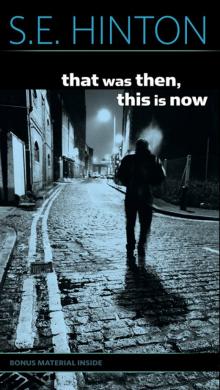 That Was Then, This Is Now
That Was Then, This Is Now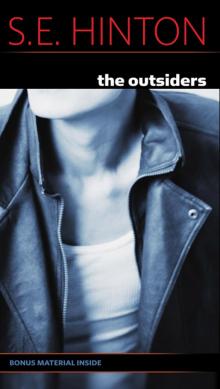 The Outsiders
The Outsiders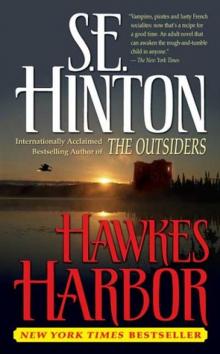 Hawkes Harbor
Hawkes Harbor Taming the Star Runner
Taming the Star Runner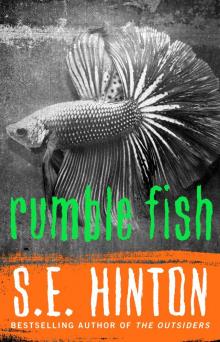 Rumble Fish
Rumble Fish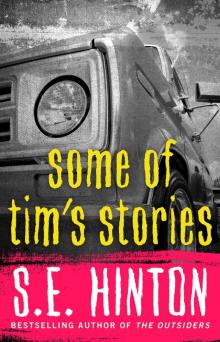 Some of Tim's Stories
Some of Tim's Stories